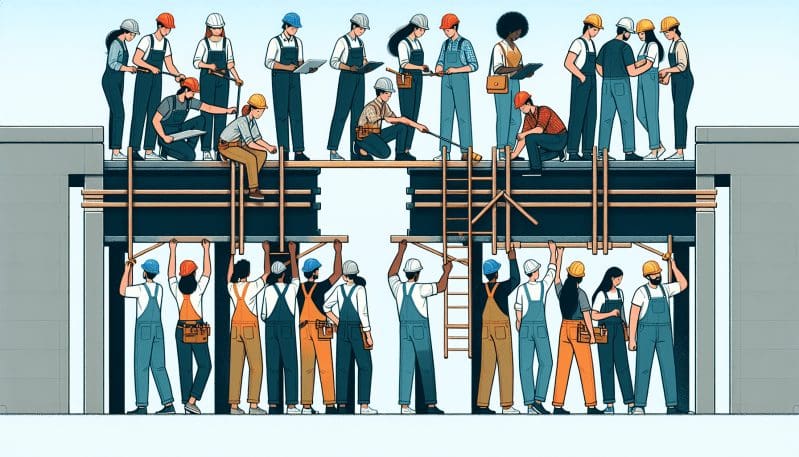Bridging the Gap: Addressing the Unique Challenges and Barriers Apprentices Face in Today’s Workforce
- Home
- Bridging the Gap: Addressing the Unique Challenges and Barriers Apprentices Face in Today’s Workforce
- Editors Desk
- April 11, 2024
- 0 Comments
In the bustling corridors of modern industry, apprentices embark on a transformative journey, one that promises mastery and economic mobility. However, this path is often fraught with challenges that can hinder progress and dim aspirations. In today’s high-stakes economic landscape, akin to the insightful narratives of The Washington Post, The New Yorker, and The New York Times, we’re peeling back the layers to reveal the obstacles apprentices face and the bold strides needed to reshape their destiny.
Apprenticeships have long been a backbone of vocational training, a bridge between theoretical knowledge and practical proficiency. Yet, as we scrutinize the framework of these programs, it becomes evident that apprentices often grapple with socioeconomic factors that limit access to these pivotal opportunities. From the inner-city youth facing financial strain to the rural applicant disconnected from metropolitan centers of commerce, the apprenticeship landscape is riddled with disparities.
Educational barriers augment these disparities. In some quarters, the perceived value of a college degree overshadows the merits of vocational training. Young minds are funneled towards universities, with apprenticeships relegated to a secondary pathway, often misunderstood and undervalued. This pervasive bias can steer potential apprentices away, particularly those from communities where traditional higher education isn’t deeply rooted.
Moreover, industry biases contribute their share of stumbling blocks. Certain sectors still cling to archaic notions, where apprenticeships are the territory of specific demographics, inadvertently sidelining talented individuals who don’t fit the mold. This narrow view not only stifles diversity but also innovation, as a homogenous workforce can lead to an echo chamber devoid of fresh perspectives.
Yet, amidst these barriers lies untapped potential. By harnessing the power of apprenticeships, we can cultivate a workforce that mirrors the rich tapestry of society. Businesses can take the lead by creating inclusive programs that reach out to underrepresented communities, offering not just training but mentorship and support. Educational institutions can recalibrate curricula, intertwining vocational tracks with academic offerings, thus elevating the status of apprenticeships.
Policy-makers, too, have a critical role in sculpting the future of workforce development. Legislation can incentivize businesses to craft robust apprenticeship programs and ensure that funding is equitably allocated. By fostering public-private partnerships, we establish a collaborative framework where apprentices are not just participants but partners in progress.
Illustrating the impact, we share the success stories of apprentices who have surmounted adversity. Take Maria, who navigated the maze of an inner-city upbringing to become a master electrician, or John, whose rural roots didn’t deter him from breaking into the tech industry. Their narratives are not just uplifting but instructional, revealing the profound influence of targeted support and mentorship.
Our analysis is incomplete without weighing the efficacy of current support programs against proposed initiatives. With expert insights on workforce development, we dissect what works, what falters, and what the future must hold to enliven the apprenticeship model.
This exploration is more than a mere examination of the present; it is a clarion call for action and reform. In the spirit of the thought-provoking journalism that characterizes The Washington Post, The New Yorker, and The New York Times, we invite you to reflect, engage, and advocate for an apprenticeship revolution that will forge a skilled and diverse workforce for generations to come.


Leave A Comment